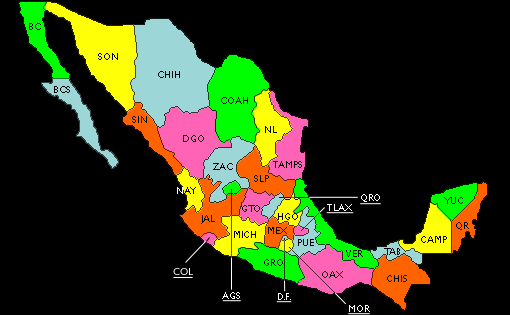

From 1933 through 1998, Mexico's 31 states and Distrito Federal (Federal District, Mexico City) all issued identical license plates. The state of origin was determined only by an abbreviation on the plate. A single serial format was used for the entire nation, with blocks of letters assigned to the various states to assure no duplicative plate numbers.
In 1998, individual Mexican states began to issue their own distinct graphic issues. The serial format (a seven-digit ABC1234 format) remains constant throughout the nation with letter series still doled out in blocks to the individual states.
Initial graphic issues tended towards more sparse designs and retained the larger serial dies seen on the final (1992-1998) federal issue plate. Starting in 1999, a second generation of graphic plates began to appear. These designs tend to be a little more bold than the first generation plates and are distingished by smaller serial dies and a revised serial layout with dashes placed in the number (ABC-12-34 as opposed to the older ABC1234). Beginning in 2003, a number of states began replacing their second-generation plates, resulting in a third generation of plates, which is now being added to by a fourth generation starting in 2007.
